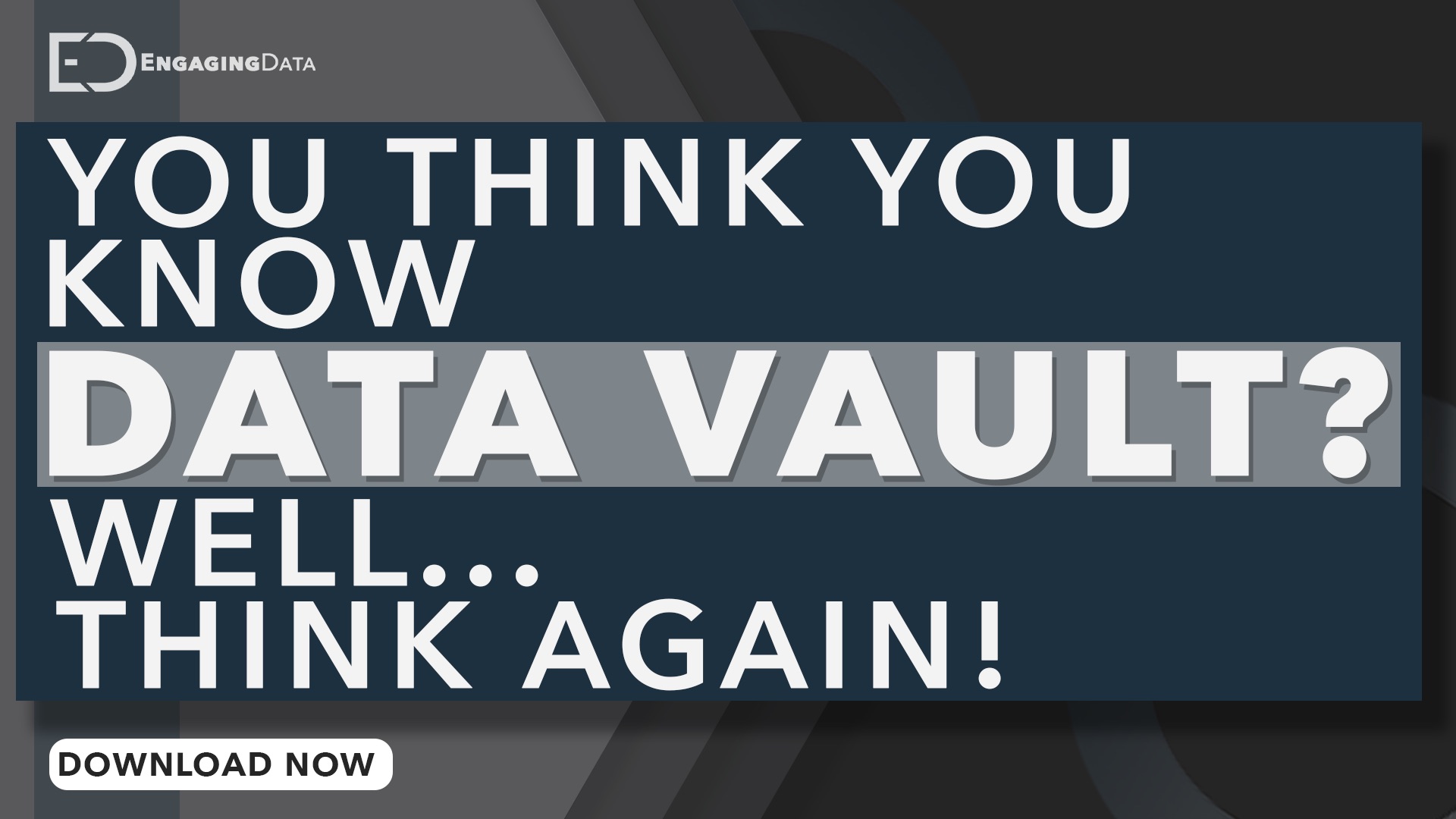Overcoming Data Storage Challenges: Embracing Data Vault
The landscape of data management is continually changing, with this, businesses are constantly challenged to find efficient, secure and scalable solutions to store and manage their volumes of data.
Traditional data storage methods, once reliable, are now struggling to keep pace with the demands of modern data management.
This blog post explores the pitfalls of traditional data storage and presents Data Vault as a cutting-edge to overcome these challenges.
Risks Associated with Traditional Data Management
Legacy data management systems pose significant risks to organisations.
Without Data Vault, and outdated data management systems in place, there are various obstacles that impede efficient data management and utilisation. Let’s delve into some of these challenges:
- Data Silos: Fragmented data across systems hinders collaboration and leads to duplicated efforts.
- Limited Flexibility: Traditional approaches lack agility stifling innovation and hindering adaptability to changing needs.
- Poor Data Quality: Inconsistent data undermines decision-making and erodes trust.
- Compliance Risks: Non-compliance with regulations poses legal and reputational threats.
- Scalability Challenges: Managing large data volumes becomes inefficient and resources-intensive.
- Manual Work Overload: Manual tasks are time-consuming and error-prone, inhibiting efficiency.
- Fragmented Data Warehouses: Maintaining separated warehouses complicates management and analysis.
- Data Overload: Copying with massive data influxes overwhelms organisations.
- Need for Automation: Manual tasks hinder productivity, automation streamlines operations.
- Lengthy Solution Engineering: Developing solutions takes too much time and resources.
- Urgent Dashboard Requirements: Real-time insights are difficult to deliver promptly.
Understanding Data Vault
In response to the limitation of traditional data management, Data Vault has emerged as a revolutionary approach to data storage and integration.
Developed by Dan Linstedt, Data Vault employs a hub-and-spoke architecture, consisting of hub, links and satellites, to organise and store data in a highly scalable and flexible manner. Unlink traditional methods that rely on complex relational structures, Data Vault separates business keys from descriptive attributes, enabling seamless integration of disparate data sources.
Steps to Implement Data Vault
Access Current Data Infrastructure: Begin by conducting a comprehensive assessment of your organisation’s current data infrastructure. Identify its strengths, weaknesses and areas for improvement, such as data redundancy, fragmentation, and security vulnerabilities.
Design Data Vault Architecture: Collaborate with data architects and stakeholders to design a Data Vault architecture that aligns with your organisation’s objectives. Consider factors such as data volume, variety, velocity, and veracity when designing the architecture
Implement Data Vault: Once the architecture is finalised, proceed with the implementation of Data Vault components, including hubs, links, satellites, and business vaults. Ensure proper configuration and integration with existing systems and applications.
Migrate Data: Migrate existing data to the Data Vault system using reliable and secure migration methods. Validate data integrity throughout the migration process and implement data cleansing and transformation as needed to ensure compatibility with the new architecture.
Train Staff: Provide comprehensive training to staff members involved in data management and operations. Offer hands-on training sessions, documentation, and support resources to empower staff with the knowledge and skills needed to effectively utilise and maintain the Data Vault system.
In conclusion, the challenges of traditional data storage can no longer be ignored in within a data-driven business landscape. By embracing Data Vault organisations can overcome these challenges and unlock the full potential of their data assets.
With enhanced security, scalability, and integration capabilities, Data Vault empowers businesses to thrive and drive innovation through data-driven insights.
So, take the leap forward and embark on the journey to modernise your data management strategy with Data Vault.
You Think You Know Data Vault? Well… Think Again!
Are you familiar with Data Vault? Do you harbour doubts or reservations about its efficacy?
It will challenge your assumptions, dispel misconceptions, and offer a fresh perspective on its powerful data modelling approach!
FAQs (Frequently Asked Questions)
What are some common challenges associated with traditional data storage methods?
Traditional data storage methods often struggle to keep pace with the ever-growing volume, variety and velocity of data generated. Common challenges include data silos, limited scalability, security vulnerabilities, and fragmented storage.
How does Data Vault address the limitations of traditional data management systems?
Data Vault offers a scalable and flexible solution to overcome the limitations of traditional data management. By employing a hub-and-spoke architecture and separating business keys from descriptive attributes, Data Vault enables seamless integration of diverse data sources while maintaining data integrity and security.
What are the key benefits of implementing Data Vault?
Implementing Data Vault brings several benefits to organisations, including enhanced data security, improved scalability, simplified data integration, and better decision-making through actionable insights derived from unified data sources.
Is Data Vault suitable for businesses of all sizes and industries?
In short, yes! Data Vault is suitable for businesses of all sizes and industries. Whether you’re a small startup or a large enterprise, Data Vault offers a scalable and customisable solution to meet your data management needs. Its flexible architecture makes it adaptable to various industries including finance, healthcare, retail and manufacturing.

